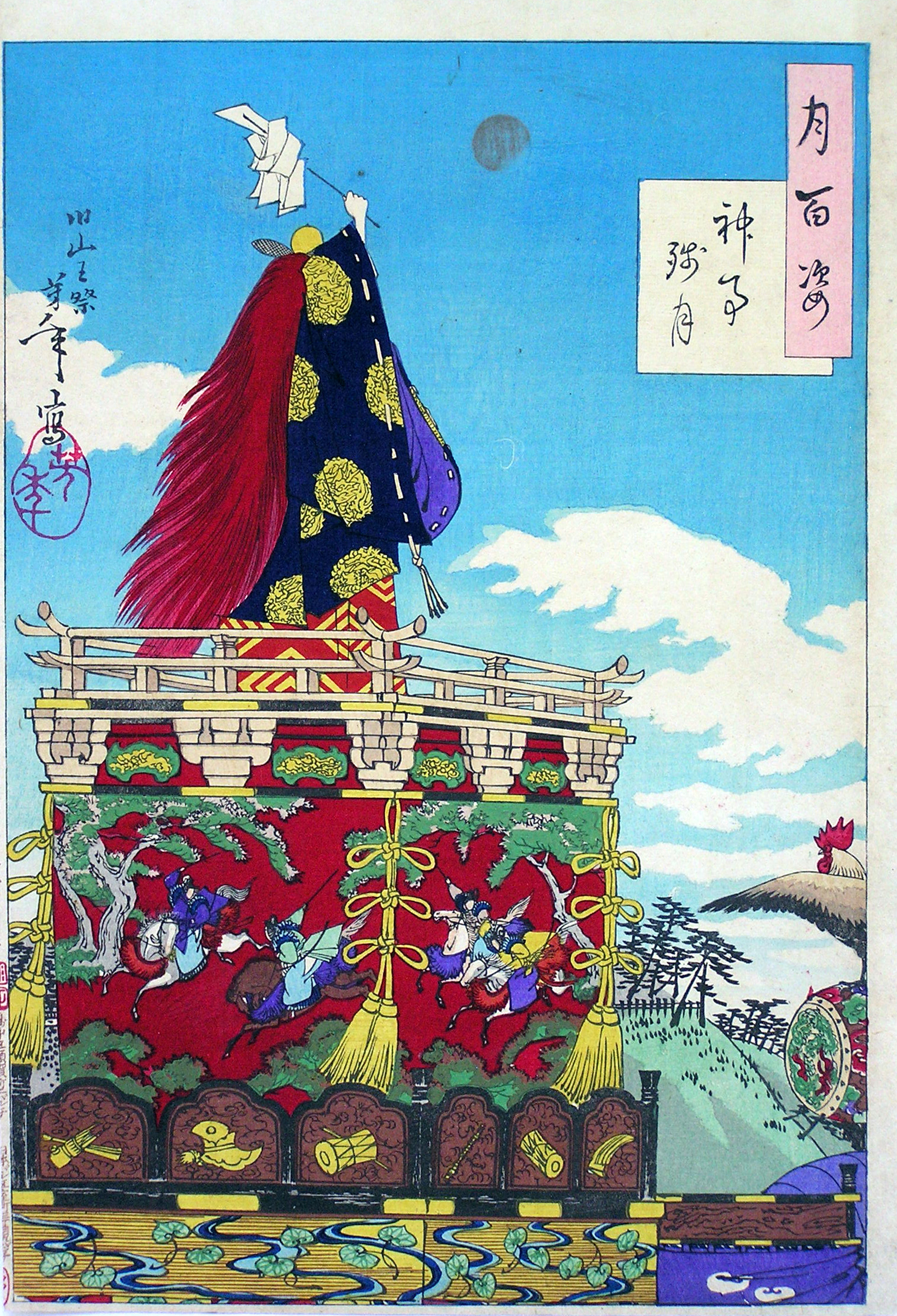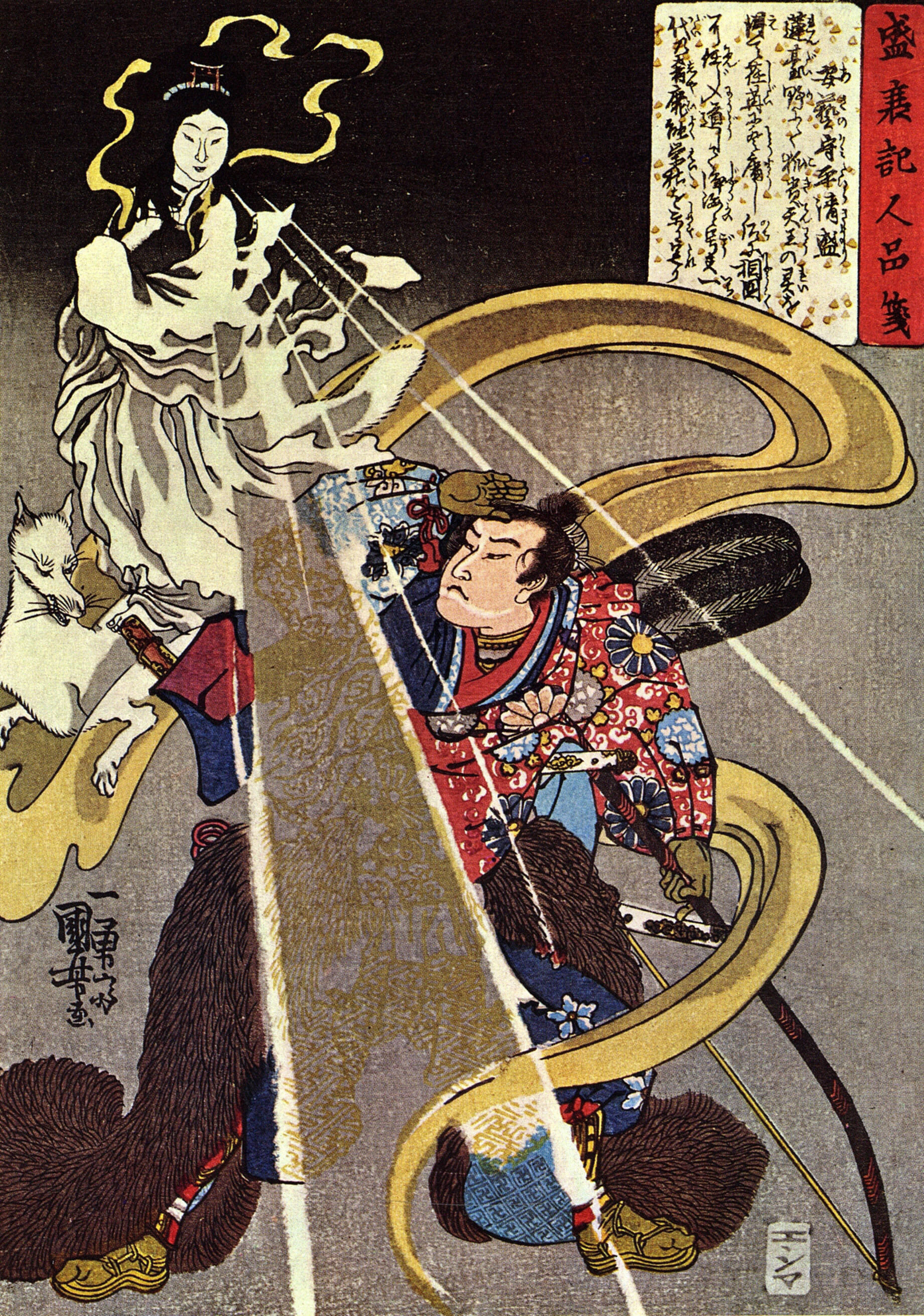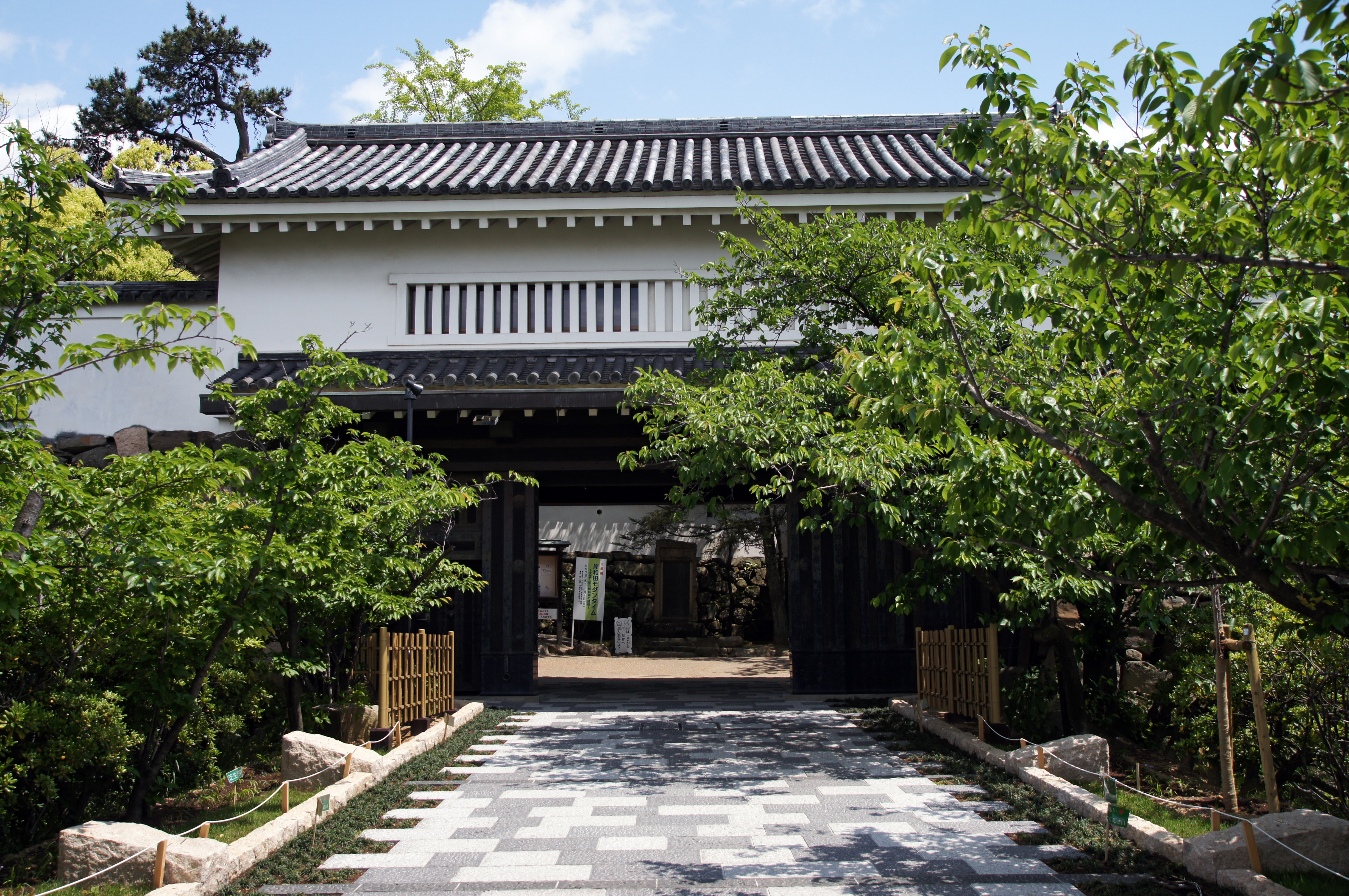|
Kishiwada Danjiri Matsuri
The , held in Kishiwada, Osaka, is one of the most famous Danjiri Matsuri festivals in Japan. The festival is a parade involving large wooden shrine floats that are pulled at a high speed by a large team of men. History The festival began in 1703 when the ''daimyō'' of Kishiwada, Okabe Nagayasu (), prayed for an abundant harvest to Shinto divinity Inari, the rice goddess of Fushimi Inari-taisha, Kyoto. He opened the doors of the Kishiwada Castle to the population for the festival. Summary The Danjiri festival is divided principally into two festivals. The first is held in September and is the more famous of the two. The second occurs in October, is less famous but involves more Danjiri. The September Festival is itself divided in two. Again, the more famous is the Kishiwada danjiri centering on the Castle and runs from the Nankai line down to the seaside. The other Danjiri festival occurs in Haruki Town and centres on Nankai Haruki Station. The September Festival involves 34 D ... [...More Info...] [...Related Items...] OR: [Wikipedia] [Google] [Baidu] |
Kishiwada, Osaka
is a city located in Osaka Prefecture, Japan. , the city had an estimated population of 190,853 in 88598 households and a population density of 2600 persons per km². The total area of the city is . The city is well known for its Danjiri Matsuri. Geography Kishiwada is located southwestern part of Osaka Prefecture, and forms a long and narrow area (7.6 km east–west, 17.3 km north–south) from Osaka Bay to the Izumi Mountains. Neighboring municipalities Osaka Prefecture * Izumi * Kaizuka * Tadaoka Wakayama Prefecture * Kinokawa * Katsuragi Climate Kishiwada has a Humid subtropical climate (Köppen ''Cfa'') characterized by warm summers and cool winters with light to no snowfall. The average annual temperature in Kishiwada is 14.6 °C. The average annual rainfall is 1475 mm with September as the wettest month. The temperatures are highest on average in August, at around 26.6 °C, and lowest in January. Demographics Per Japanese census data, the pop ... [...More Info...] [...Related Items...] OR: [Wikipedia] [Google] [Baidu] |
Respect For The Aged Day
is a public holiday in Japan celebrated annually to honor elderly citizens. It started in 1966 as a national holiday and was held on every September 15. Since 2003, Respect for the Aged Day is held on the third Monday of September due to the Happy Monday System. This national holiday traces its origins to 1947, when Nomadani-mura (later Yachiyo-cho, currently Taka-cho), Hyōgo Prefecture, proclaimed September 15 Old Folks' Day (Toshiyori no Hi). Its popularity spread nationwide, and in 1966 it took its present name and status. Annually, Japanese media take the opportunity to feature the elderly, reporting on the population and highlighting the oldest people in the country. Commemorative silver sake cups Since 1963, the Japanese government The Government of Japan consists of legislative, executive and judiciary branches and is based on popular sovereignty. The Government runs under the framework established by the Constitution of Japan, adopted in 1947. It is a unitary ... [...More Info...] [...Related Items...] OR: [Wikipedia] [Google] [Baidu] |
Fukagawa Matsuri
or the Fukagawa Festival, is one of the three great Shinto festivals of Tokyo, along with the Kanda Matsuri and Sannō Matsuri. The Fukagawa Matsuri is held annually in mid-August by the Tomioka Hachiman Shrine in Koto, Tokyo. Tomioka Hachimangu, also known as Tomioka Yawata shrine, is Fukagawa's greatest shinto shrine, and was established in 1627. The festival, is believed to date back to 1642, and is one of the three greatest festivals of Edo, together with Sanno Matsuri of Kojimachi Hie Shrine and Kanda Matsuri of Kanda Shrine. See also * Culture of Japan * Japanese calendar * Japanese festivals * Festivals in Tokyo Tokyo holds many festivals (''matsuri'') throughout the year. Major Shinto shrine festivals include the Sanno Festival at Hie Shrine, and the Sanja Festival at Asakusa Shrine. The Kanda Matsuri in Tokyo is held every two years in May. The festiv ... External links * {{authority control Religious festivals in Japan Festivals in Tokyo Japan ... [...More Info...] [...Related Items...] OR: [Wikipedia] [Google] [Baidu] |
Sannō Matsuri
or the Sannō Festival, is a major Shinto festival in Tokyo, along with the Fukagawa Matsuri and Kanda Matsuri. The Festival takes place annually in mid-June, but involves a procession called Shinkosai in even-numbered years only; annual celebrations encompass a number of activities and celebrations over a week, including the day-long Shinkosai (also called Jinkosai) parade through Nagatachō is a district of Tokyo, Japan, located in Chiyoda Ward. It is the location of the Diet of Japan and the Prime Minister's residence (Kantei). The Supreme Court of Japan is located in neighboring Hayabusachō. Nagatachō is often used to refer ..., Chiyoda, Tokyo. See also * Culture of Japan * Japanese calendar * Japanese festivals * Festivals in Tokyo *List of Buddhist festivals References External links Official page of the Sannō Matsuri on the Hie Shrine website Religious festivals in Japan Festivals in Tokyo Japanese culture Shinto festivals Shinto in Tokyo Pa ... [...More Info...] [...Related Items...] OR: [Wikipedia] [Google] [Baidu] |
Danjiri Matsuri
Danjiri Matsuri are cart-pulling festivals held in Japan. The Kishiwada Danjiri Matsuri is probably the most famous. There are other Danjiri Matsuri held in the City of Kobe and Haruki Town, but they are less popular and spectacular. The highlight of the Festival is a race between floats representing different neighborhoods. The danjiri cart ''Danjiri'' are large wooden carts (''danjiri guruma'') in the shape of a shrine or temple. The carts, often being crafted out of wood, are very ornate, with elaborate carvings. Towns with ''danjiri'' festivals in them have different neighborhoods, each with their own guild responsible for maintaining their own ''danjiri'' cart. The cart is kept in storage for most of the year. As the festival approaches, the ''danjiri'' cart is prepared with elaborate flower arrangements, prayer cards, ornaments, and religious consecrations. They also make a special song every year. It is believed that spirits or gods reside in the ''danjiri''. The person on ... [...More Info...] [...Related Items...] OR: [Wikipedia] [Google] [Baidu] |
Daimyō
were powerful Japanese magnates, feudal lords who, from the 10th century to the early Meiji era, Meiji period in the middle 19th century, ruled most of Japan from their vast, hereditary land holdings. They were subordinate to the shogun and nominally to the Emperor of Japan, emperor and the ''kuge''. In the term, means 'large', and stands for , meaning 'private land'. From the ''shugo'' of the Muromachi period through the Sengoku period, Sengoku to the ''daimyo'' of the Edo period, the rank had a long and varied history. The backgrounds of ''daimyo'' also varied considerably; while some ''daimyo'' clans, notably the Mōri clan, Mōri, Shimazu clan, Shimazu and Hosokawa clan, Hosokawa, were cadet branches of the Imperial family or were descended from the ''kuge'', other ''daimyo'' were promoted from the ranks of the samurai, notably during the Edo period. ''Daimyo'' often hired samurai to guard their land, and they paid the samurai in land or food as relatively few could aff ... [...More Info...] [...Related Items...] OR: [Wikipedia] [Google] [Baidu] |
Shinto
Shinto () is a religion from Japan. Classified as an East Asian religion by scholars of religion, its practitioners often regard it as Japan's indigenous religion and as a nature religion. Scholars sometimes call its practitioners ''Shintoists'', although adherents rarely use that term themselves. There is no central authority in control of Shinto, with much diversity of belief and practice evident among practitioners. A polytheistic and animistic religion, Shinto revolves around supernatural entities called the . The are believed to inhabit all things, including forces of nature and prominent landscape locations. The are worshiped at household shrines, family shrines, and ''jinja'' public shrines. The latter are staffed by priests, known as , who oversee offerings of food and drink to the specific enshrined at that location. This is done to cultivate harmony between humans and and to solicit the latter's blessing. Other common rituals include the dances, rites of pass ... [...More Info...] [...Related Items...] OR: [Wikipedia] [Google] [Baidu] |
Inari Ōkami
, also called , is the Japanese ''kami'' of foxes, fertility, rice, tea and sake, of agriculture and industry, of general prosperity and worldly success, and one of the principal kami of Shinto. In earlier Japan, Inari was also the patron of swordsmiths and merchants. Represented as male, female, or androgynous, Inari is sometimes seen as a collective of three or five individual ''kami''. Inari appears to have been worshipped since the founding of a shrine at Inari Mountain in 711 AD, although some scholars believe that worship started in the late 5th century. By the 16th century, Inari had become the patron of blacksmiths and the protector of warriors, and worship of Inari spread across Japan in the Edo period. Inari is a popular figure in both Shinto and Buddhist beliefs in Japan. More than one-third (32,000) of the Shinto shrines in Japan are dedicated to Inari. Modern corporations, such as cosmetic company Shiseido, continue to revere Inari as a patron kami, with shrines at ... [...More Info...] [...Related Items...] OR: [Wikipedia] [Google] [Baidu] |
Fushimi Inari-taisha
is the head shrine of the ''kami'' Inari, located in Fushimi-ku, Kyoto, Kyoto Prefecture, Japan. The shrine sits at the base of a mountain also named Inari which is above sea level, and includes trails up the mountain to many smaller shrines which span and take approximately 2 hours to walk up. Inari was originally and remains primarily the ''kami'' of rice and agriculture, but merchants and manufacturers also worship Inari as the patron of business. Each of Fushimi Inari-taisha's roughly thousand torii was donated by a Japanese business. Owing to the popularity of Inari's division and re-enshrinement, this shrine is said to have as many as 32,000 sub-shrines (分社 ''bunsha'') throughout Japan. History The shrine became the object of imperial patronage during the early Heian period. In 965, Emperor Murakami decreed that messengers carry written accounts of important events to the guardian ''kami'' of Japan. These ''heihaku'' were initially presented to 16 shri ... [...More Info...] [...Related Items...] OR: [Wikipedia] [Google] [Baidu] |
Kyoto
Kyoto (; Japanese: , ''Kyōto'' ), officially , is the capital city of Kyoto Prefecture in Japan. Located in the Kansai region on the island of Honshu, Kyoto forms a part of the Keihanshin metropolitan area along with Osaka and Kobe. , the city had a population of 1.46 million. The city is the cultural anchor of a substantially larger metropolitan area known as Greater Kyoto, a metropolitan statistical area (MSA) home to a census-estimated 3.8 million people. Kyoto is one of the oldest municipalities in Japan, having been chosen in 794 as the new seat of Japan's imperial court by Emperor Kanmu. The original city, named Heian-kyō, was arranged in accordance with traditional Chinese feng shui following the model of the ancient Chinese capital of Chang'an/Luoyang. The emperors of Japan ruled from Kyoto in the following eleven centuries until 1869. It was the scene of several key events of the Muromachi period, Sengoku period, and the Boshin War, such as the Ōnin War, the Ho ... [...More Info...] [...Related Items...] OR: [Wikipedia] [Google] [Baidu] |
Kishiwada Castle
is a Japanese castle located in the city of Kishiwada, Osaka Prefecture, Japan. At the end of the Edo period, Kishiwada Castle was home to the Okabe clan, ''daimyō'' of Kishiwada Domain. The Honmaru Garden of the castle is designated as a National Place of Scenic Beauty. The castle is also known as . Background Kishiwada Castle is located in the center of the city of Kishiwada, facing Osaka Bay. The site is a very strategic location, approximately half way in-between the cities of Osaka and Wakayama and just south of the port of Sakai. It is located on the Kishū Kaidō, the main route connecting the capital area of Japan with Kii Province, and its coastal location was important for transportation from the eastern Shikoku to Settsu Province and Kyoto. It is unknown when this location was first fortified. During the Nanboku-chō period, a local warlord named Kishiwada Osamu was subordinate to Kusunoki Masashige at the Battle of Minatogawa in 1336 and is believed to have bu ... [...More Info...] [...Related Items...] OR: [Wikipedia] [Google] [Baidu] |







